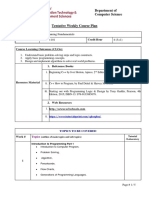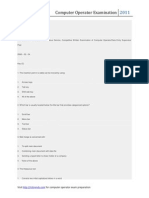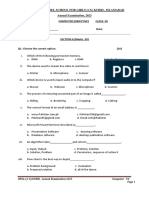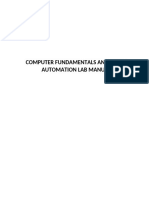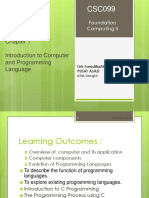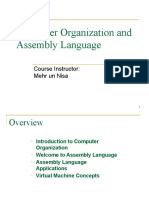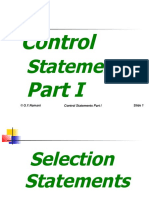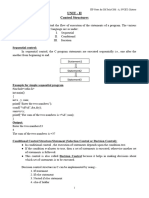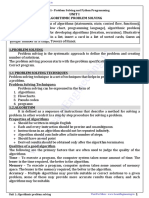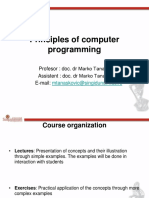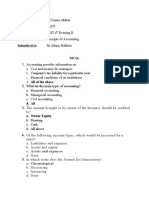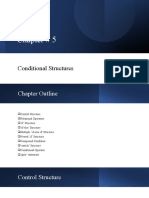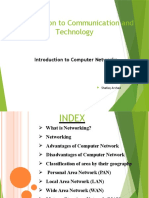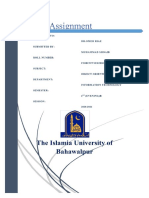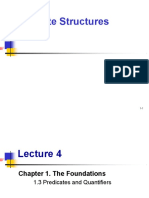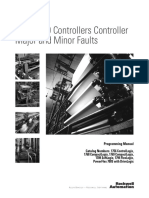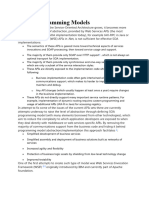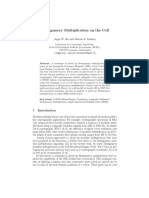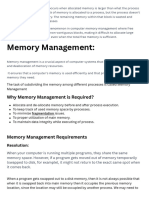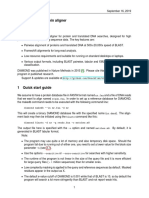COSC1101- Programming
Fundamentals
Course Instructor: Sana Nazir
Intro & Lecture 1
Course Objective
This course is all about the basic programming skills. Students
will learn how to design the algorithms to solve simple problems
and then how to program the designed algorithms. Students will
study the programming constituents in C/C++ from basic to
advance level. At the end of the course, students will be able to
understand the problems and design and write appropriate
computer programs in C/C++ to solve those problems.
Recommended books:
1. Let Us C by Yashwant Kanitkar
2. How to Program: Using C++ by Robert Lafore
3. Programming in C by Behroz A. Frouzen
4. C ++ by Dietal & Dietal
5. Object Oriented programming using C++ by Tasleem Mustfa
How Important is it?
• Fundamental basis for all of your courses that involve
programming throughout this degree program
• It will be very hard to compensate for it in future
• If you fail to perform well in this course, it will be very hard for
you to go through next semesters and to finally get out with a
degree in your hand.
How to Perform Well
Revise the lecture the same day
Complete given tasks before next lecture
Tasks will be given at the end of every lecture
Consult your teacher, class mates if you are unable to
understand a concept.
Most Important Thing
Practice
Course Content
• Basics of Programming & Programming Languages
• Problem Solving using Algorithms
• Operators
• Decision Statement: If, If-Else, Switch, Break and
Continue, Switch
• For Loop Structure, While and Do While Loop, Nested
loops
• Arrays
Course Content
• Functions
• Strings: Basics and Manipulation
• Pointers
• Structures
• Handling Files in C
Programming Fundamentals Intro
Computer:
A computer is a programmable, multiuse machine that accepts
data, ( raw facts and figures) and process, or manipulates, it into
information.
Information:
“processed data on a computer is called information.”
Programming
• Computers are dumb but they can do exactly what they are
told to do
• Giving instructions to a computer to perform a task is what we
call “programming”
• These set of instructions are called a “computer program”
• This capability of computers is what makes them so powerful
Programming
1. What kind of instructions a computer
can understand?
2. How can we communicate it to the
computer?
Looking Inside Computer
Microprocessor- A micro-chip that can perform arithmetic
operations, Being a digital circuit, it understands only 0’s and 1’s
known as “machine language”
- It can handle only simple operations like Add, Subtract,
Multiply, Divide etc.
- It can be used in many devices, computer is just one example
Giving Instructions to Microprocessor
- It’s very hard for human beings to remember different patterns
of 0’s and 1’s
- It is almost impossible for a human being to write a computer
program consisting only of 0’s and 1’s
- There was a need to define a language which is easier to
understand and work with
Solution: Assembly Language
Set of short words to represent different patterns of 0’s and 1’s
- Example: ADD ⇔ 00101101
Remember: Microprocessor can only understand machine
language (0s & 1s)
- How assembly language will work then?
Solution: Assembler
A translator to convert words into appropriate patterns of 0s &
1s
- i.e, converts series of instructions (written in assembly
language) into machine language
Problem with Assembly Language
- It is a low-level language more close to machine rather than
human beings
- Human mind does not work so simply as the machine does
it is still very different from the languages that human beings
speak
Solution: High Level Languages
The programming languages which are closer to human
languages and further from machine languages
Remember: Microprocessor can only understand machine
language (0s & 1s) How a high-level language will work then?
Solution: Compiler
A translator to convert instructions written in a high-level
language to low- level language.



